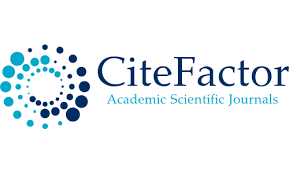Currently, The Problems Of the Process Of Moistening Raw Cotton and Cotton Fiber
Keywords:
moisture content, raw cotton processing, fiber qualityAbstract
The moistening of raw cotton and cotton fiber is a critical stage in the textile production process, significantly influencing the quality of the final product. However, achieving optimal moisture content presents numerous challenges. One of the primary problems is the uneven distribution of moisture during processing, which can lead to variations in fiber strength and quality. The inappropriate application of water or humidification methods often causes fiber shrinkage, reduced durability, and increased contamination. Furthermore, the control of temperature and humidity plays a vital role in preventing over-drying or excessive moisture retention, both of which can negatively affect the spinning and handling properties of cotton fibers. Technological limitations, coupled with the complexity of monitoring moisture levels accurately, result in inefficiencies in the cotton processing industry. Research has also shown that improper moisture regulation can lead to decreased efficiency in machinery, increased energy consumption, and a higher likelihood of fiber damage during transportation and storage. Therefore, addressing these issues requires advancements in moisture control technologies and the development of standardized procedures to ensure consistent and high-quality cotton fiber production
References
Kumar, P.S., Joshiba, G.J. This research covers the sustainability aspects of cotton spinning, focusing on
challenges such as moisture control during fiber processing, which directly impacts fiber quality.
Sustainability in the Textile and Apparel Industries. Springer. 2020.
(SpringerLink)ps://link.springer.com/chapter/10.1007/978-3-030-38545-3_9.
Gonlugur, M.E. This study investigates the uneven distribution of moisture during cotton fiber wetting
and its effects on fiber strength, elasticity, and overall quality during the spinning process. Sustainable
Production Methods in the Textile Industry. InTechOpen. 2019.
(SpringerLink)ps://link.springer.com/chapter/10.1007/978-3-030-38545-3_9).3. Palamutcu, S. This research focuses on the effects of moisture content on the physical and mechanical
properties of cotton fibers and how it influences spinning efficiency and yarn quality. Sustainable Textile
Technologies: Process and Product Innovations in the Cotton Industry. 2017. (SpringerLink
)ps://link.springer.com/chapter/10.1007/978-3-030-38545-3_9).
Гуляев Р.А. Разработка нового способа увлажнения хлопкового волокна перед прессованием:
Диссертация на соискание степени кандидата технических наук. - Ташкент, 2004.
N.A.Xusanova Paxta tolasini namlashning tejamkor texnologiyasini ishlab chiqish. Diss.PhD,
Toshkent,2022 y.B.96-102
Гуляев Р.А., Назиров Р.Р., Исанов Ф.Ж., Лугачев А.Е. Разработка генератора агента увлажнения
хлопка-сырца и хлопкового волокна. // Механика и технологии. - 2016.-№1.-С.40-45.
Ulug, O. Z. (2024). PAXTA TOLASINI YOPIQ TSIKLLI BOSHQARUV TIZIMLARI ORQALI
NAMLASH JARAYONLARINI AVTOMATLASHTIRISH. Механика и технология, 3(16), 211-
NO, S., & TOT, L. COURSE STRUCTURE FOR TEXTILE TECHNOLOGY SECOND YEAR
FIRST SEMISTER. Statistics, 3(1), 4.
Z.U.Ortiqov, A.X.Arrabbayev. “Planning of multi-stage production systems with interchangeable
equipment”. Academicia: An International Multidisciplinary Research Journal https://saarj.com Vol.
, Issuye 1, January 2021. –Р 410-417.
Гуляев Р.А., Назиров Р.Р., Исанов Ф.Ж., Лугачев А.Е. Разработка генератора агента увлажнения
хлопка-сырца и хлопкового волокна. // Механика и технологии. - 2016.-№1.-С.40-45.
Yu, R., Prabhakar, M. N., & Song, J. I. (2022). Effect of extracted nano-cellulose from paper egg trays
on mechanical properties of vinyl ester/kenaf fibers composites. Journal of Polymers and the
Environment, 30(12), 5313-5326.
Z.U.Ortiqov. Classification of textile fibers and the concept of fibers. // Наукоемкие исследования
как основа инноватсионного развития общества Сборник статей по итогам Международной
научно-практической конференсии терлитамак, Российская Федератсия 18 декабря 2019 г.С
-143.
Stylios, G. K. (2007). International textile and clothing research register. International Journal of
Clothing Science and Technology, 19(6), 1-80.
Z.U.Ortiqov. “Formation of cotton fiber structure”. ERB Genius jurnals ISSN: 2795-7365 volum 18
march 2023. –P 16-20. (01.00.00 №2)
Ortikov, Z. U. (2019). CLASSIFICATION OF TEXTILE FIBERS AND THE CONCEPT OF
FIBERS. In НАУКОЕМКИЕ ИССЛЕДОВАНИЯ КАК ОСНОВА ИННОВАЦИОННОГО
РАЗВИТИЯ ОБЩЕСТВА (pp. 140-142).
Daning Lang, Gang Liu, Ronglan Wu, Wei Wang, Jian Wu, Lili Wang, Jun Yang, Chao Yang, Lu
Wang, Jihong Fu. Efficient preparation of anisotropic cellulose sponge from cotton stalks: An excellent
material for separation applications, Journal of Hazardous Materials, Volume 476, 2024, 134941, ISSN
-3894, https://doi.org/10.1016/j.jhazmat.2024.134941.
Z.U.Ortiqov, M.Mirzaahmedov. Формирование оптималной многоуровневой системы
управления процессом. 1-том «Управление, оптимизатсия и динамические системы» к 80-
летию со дня рождения Нумана Юнусовича Сатимова (1939-2006) тезисы докладов Андижан,
Республика Узбекистан, 17-19 октября 2019 г. 145-146 с.
Z.U.Ortiqov, E.Abdullayev, F.Madolimov. Оптимизации в условиях многостадийных системы
управления процессом. 2-том «Управление, оптимизатсия и динамические системы» к 80-
летию со дня рождения Нумана Юнусовича Сатимова (1939-2006) тезисы докладов Андижан,
Республика Узбекистан, 17-19 октября 2019 г. 53-57 с.
M.R. Piggott, A new model for interface failure in fibre-reinforced polymers, Composites Science and
Technology, Volume 55, Issue 3, 1995, Pages 269-276, ISSN 0266-3538,
https://doi.org/10.1016/0266-3538(95)00103-4.
Zhang, J. W., Zhang, Y., Li, Y. Y., & Wang, P. (2022). Textile-based flexible pressure sensors: A
review. Polymer Reviews, 62(1), 65-94.
Downloads
Published
Issue
Section
License
Copyright (c) 2025 O.Sh.Sarimsakov, Z.U.Ortikov, S.Uzakov, N.Sayidova, G.Aliyeva.

This work is licensed under a Creative Commons Attribution-NonCommercial 4.0 International License.
User Rights
Under the Creative Commons Attribution-NonCommercial 4.0 International (CC-BY-NC), the author (s) and users are free to share (copy, distribute and transmit the contribution).
Rights of Authors
Authors retain the following rights:
1. Copyright and other proprietary rights relating to the article, such as patent rights,
2. the right to use the substance of the article in future works, including lectures and books,
3. the right to reproduce the article for own purposes, provided the copies are not offered for sale,
4. the right to self-archive the article.












